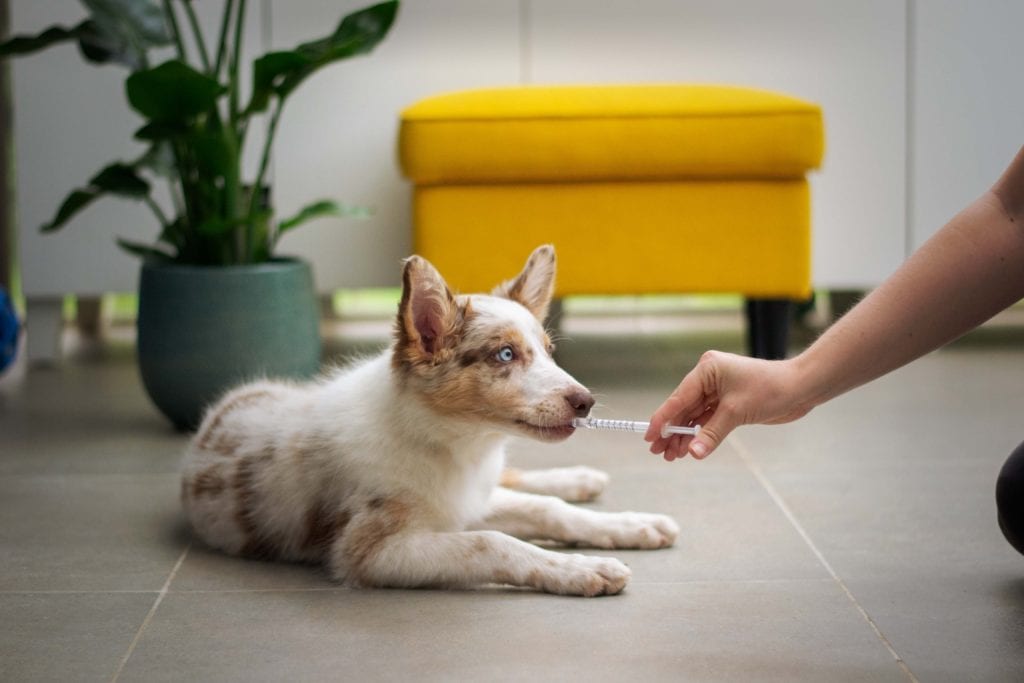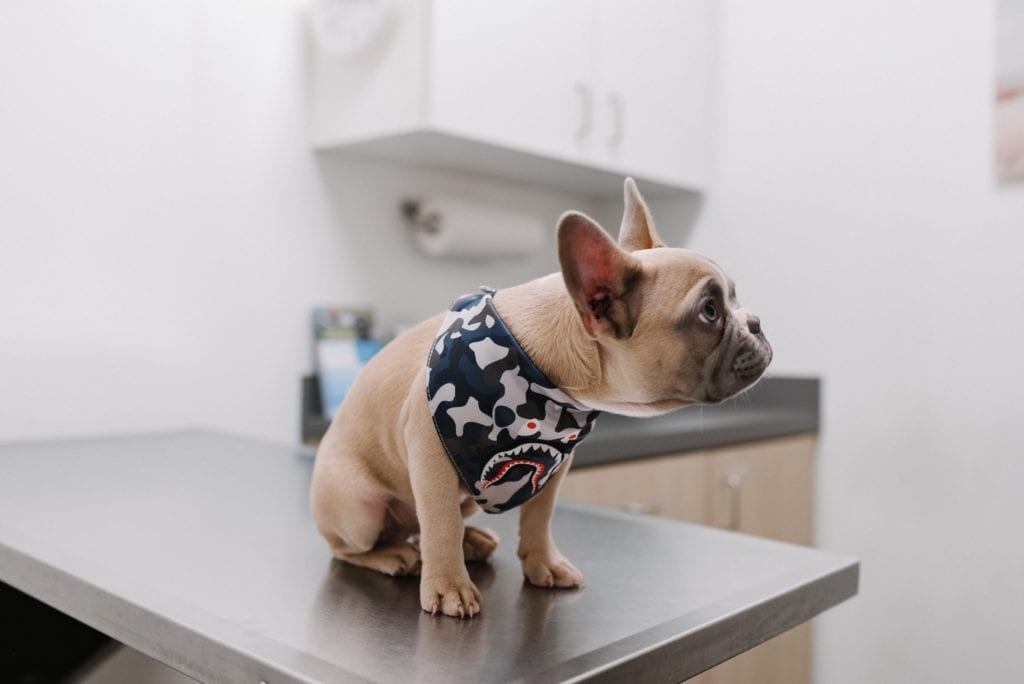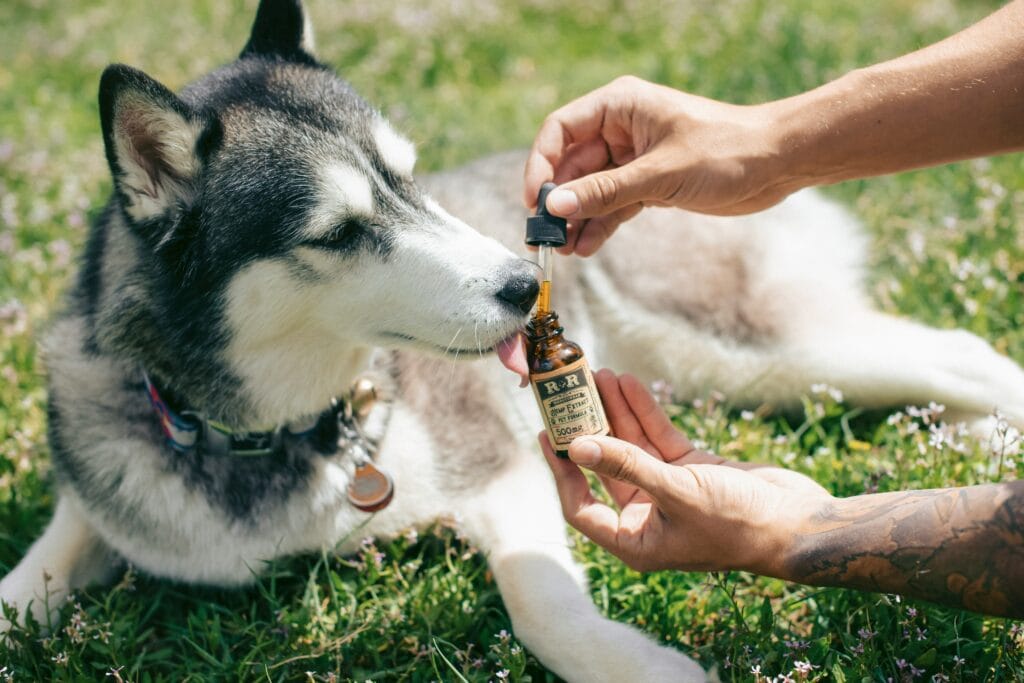Fleabite Hypersensitivity, lay term: Flea Allergy
Intro: When a flea bites an animal, it injects a small amount of saliva into the skin. Many cats and dogs develop an allergy to a protein in the flea saliva. In these pets, small numbers of flea bites will lead to an intense allergic reaction and severe itching.
Clinical Signs: Flea bite allergy tends to cause itching on the “back half” of the body, meaning the tail base, rump, belly, and rear legs. Other types of allergy, such as food allergy or environmental allergies, tend to cause itching on other parts of the body (such as the face, ears, paws, neck, armpits, or anus), but they don’t affect the back, so it’s pretty easy to differentiate flea bite allergy from the other allergies.
Common reactions:
“But I haven’t seen any fleas on my pet!” We know. We’re not suggesting that you’re a negligent pet owner or that your house is infested with fleas. Fleabite allergy is different from flea infestation, where a pet has numerous fleas living on them. With fleabite allergy, it only takes a very small amount of flea bites to set off the allergic reaction that can last for 3-4 weeks. A couple fleas biting your pet in the backyard when they go outside for bathroom breaks is enough to make an allergic pet extremely itchy for weeks. Most allergic pets are so sensitive to fleas that they’ll immediately bite off the flea before an owner ever gets the chance to notice it.
“But I already use a monthly flea prevention!” We know. Many pets with fleabite allergy are already on a flea prevention. The problem is that most of the older, topical, and over-the-counter flea preventions do not work 100% of the time. Allergic pets are bathed frequently, so topical medications like Frontline or Advantage can be washed off. Some products like Sentinel only sterilize female fleas and prevent eggs from hatching, but do not prevent fleas from biting them freely. Even oral products like Comfortis or Nexguard can lose strength after 21 days. We usually don’t have a cold enough winter in north Texas to kill off flea populations, and we’ve had a large amount of spring rain, so this summer has been one of the worst years we’ve ever seen for fleabite allergy.
“But my cat never goes outside!” We know. If you have dogs, a flea can hitch a ride inside on the dog and then set up shop on your cat. Even if you only have indoor cats, a small number of bugs find their way into your house through cracks around doors and vents. For a normal cat, an occasional flea bite would be no big deal, but for allergic cats, the inflammation created by the allergic reaction to flea saliva can lead to intense itching, overgrooming, and skin sores.
Diagnosis: It is possible to test for fleabite allergy, but not all flea-allergic pets will show a positive test reaction, because some flea-allergic pets have a delayed-type of allergic reaction that does not show up on traditional intradermal allergy testing. Because no other allergy causes itching on the “back half” of the body, oftentimes a diagnosis of fleabite allergy can be made simply based on your pet’s pattern of itch.
Treatment: The good news is that fleabite allergy has a very safe and effective treatment: stronger, more frequent flea prevention medications! The newer oral products all work very well in dogs to kill adult fleas quickly, which keeps the number of flea bites your pet receives to an absolute minimum. We recommend all cats and dogs in the household take a monthly oral flea prevention year-round (fleas are active even in the winter in Texas) to help protect your flea-allergic pet. In some cases, indoor and outdoor professional pest control services can be helpful. For some flea-allergic patients, it works best if products are given once every 3 weeks. Aggressive flea control will need to be in place for at least 3 months before you notice full improvement. During this time the flea life cycle will be impaired and your pet will be exposed to fewer flea bites. The outdoor environment is usually the source of reinfection: opossums, raccoons, outdoor cats, and other wild animals are the main source. Since the itch from a flea-flare can last 3-4 weeks, most pets need some temporary anti-itch medications like prednisone, Temaril-P, or Apoquel while recovering from the flare. Continuing with ultra-strict flea prevention life-long can help reduce your pet’s need for steroids or Apoquel, which is definitely safer for their long-term health.





